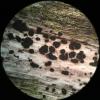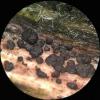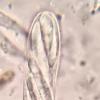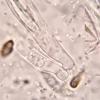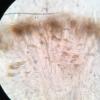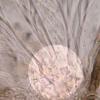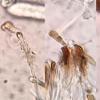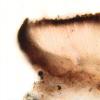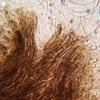
17-01-2026 19:35
Arnold BüschlenHallo, ich suche zu Cosmospora aurantiicola Lite

08-12-2025 17:37
 Lothar Krieglsteiner
Lothar Krieglsteiner
20.6.25, on branch of Abies infected and thickened

16-01-2026 00:45
Ethan CrensonHi all, On decorticated hardwood from a New York

10-01-2026 20:00
Tom SchrierHi all,We found picnidia on Protoparmeliopsis mur

13-01-2026 07:28
 Danny Newman
Danny Newman
Chlorociboria glauca on indet. decorticate logThe

15-01-2026 15:55
 Lothar Krieglsteiner
Lothar Krieglsteiner
this one is especially interesting for me because

13-01-2026 08:43
 Danny Newman
Danny Newman
Tricladium varicosporioides on indet. decorticate
Apothecia are up to 1mm in diameter, brownish black, roughened and with a raised margin when dry. Cushion shaped when hydrated.
Spores (from spore drop) are hyaline, mostly 3-septate, some 4-septate, fusiform and some are a bit irregular shaped. Some spores are shorter, wider and tear-drop shaped. Oil droplets are present. They measure 14.7 - 27.9 (35.6) x 3.5-5.4µm.
Asci 68-87 x 8-11.1µm, no croziers, IKI-
Paraphyses branched, septate, brown at the ends and swollen up to 4-5µm wide.
In Zotto's folder for Durella, this seems to match "Durella macrospora IKI-". The spores in my collection are somewhat longer. But I notice that they are similar in that the spores are quite irregularly shaped and some are quite small and tear drop shaped.
Thanks,
Ethan
IMO looks like CRZ+






